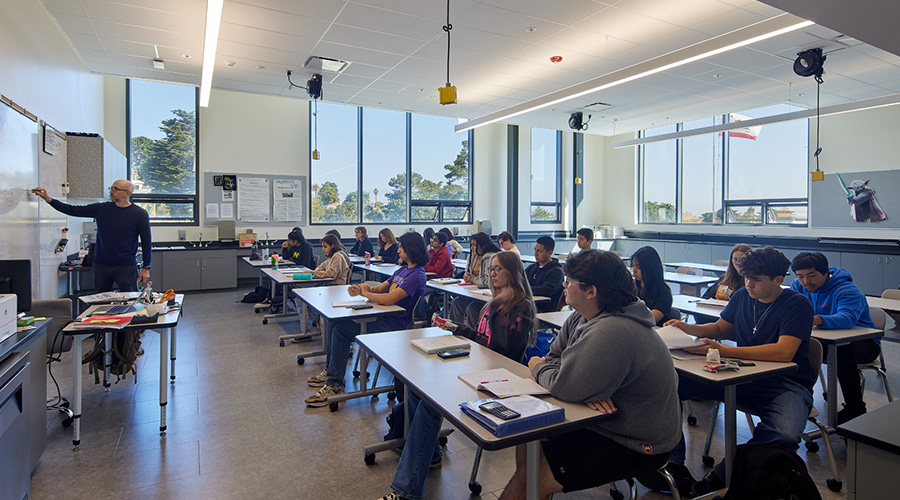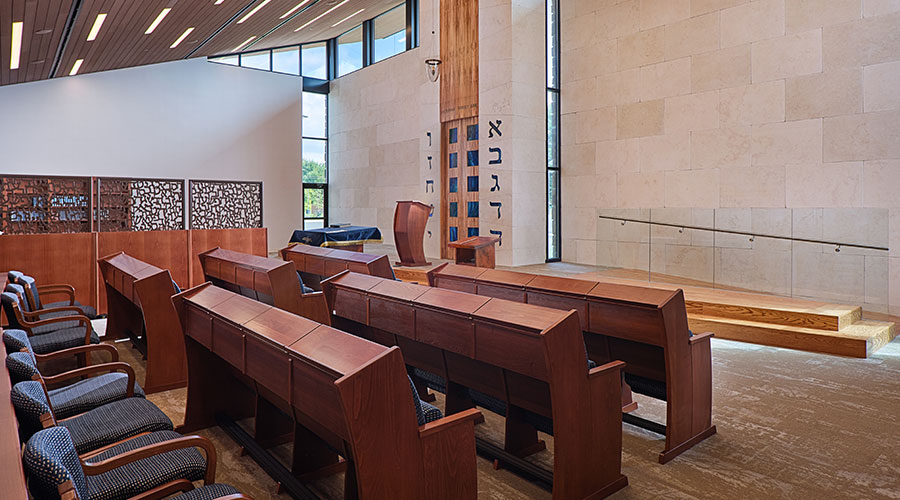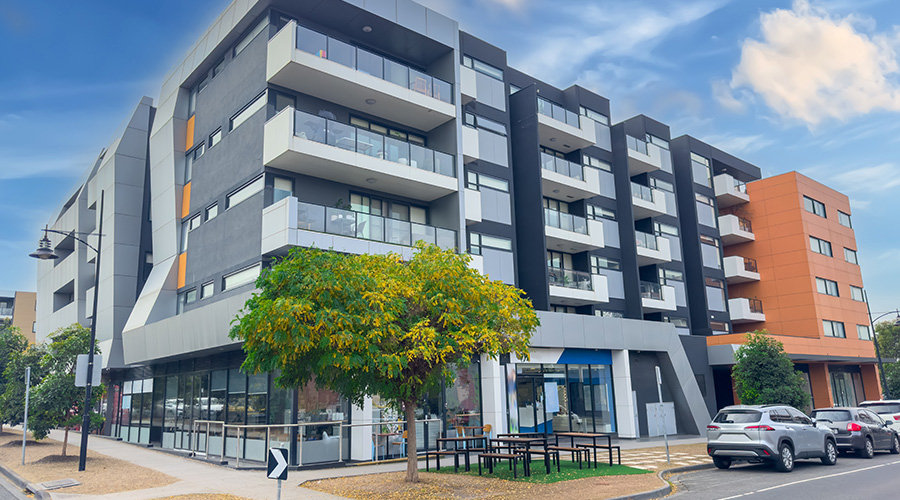Walking the (GREEN) Talk
Designing, renovating, and operating LEED-certified headquarters helps an energy company turn its sustainable mission into action
By Chris Matt, Associate Editor
When Exelon Corp. established a goal to lower its greenhouse gas emissions more than three years ago, reducing energy use in its buildings was a key component in reaching its mark. Renovating the company’s headquarters had a major impact on that initiative.
Exelon, an electric and gas utility that provides its customers with environmentally responsible energy, began consolidating its Chicago offices in the spring of 2004. The company set out to have its headquarters become certified under the U.S. Green Building Council’s Leadership in Energy and Environmental Design (LEED) for Commercial Interiors (CI) rating system and combined three to four offices into a 10-floor, 220,000-square-foot space in Chicago’s Chase Tower.
After installing energy-efficient mechanical systems and other building components designed to improve occupant productivity and comfort, Exelon’s headquarters became the largest commercial office space in the world to achieve a LEED-CI Platinum rating, LEED’s highest mark. Commissioning also was an important component of the renovation because managers received the proper training and documentation to help them maintain the systems efficiently. The new headquarters, completed in December 2006, aligns with the company’s mission to provide consumers with low-carbon, environmentally responsible energy.
Selecting a Landlord
The first step in the headquarters project was identifying a building that could accommodate the modern, energy-efficient technology Exelon had in mind.
“In terms of the LEED-CI program, a lot of what we did was contained within our own space,” says, Deb Kuo, Exelon’s director of real estate. “To the extent that the building infrastructure further enabled us to do better or more, that’s where we needed to engage the landlord. When it comes to things like plumbing, water efficiency, energy efficiency, HVAC systems and indoor air quality, those are things that the building as a whole can have a significant impact on how your interior space turns out from a LEED perspective.”
After Exelon laid out its plans for LEED certification, many prospective landlords asked a surprising question. “What exactly is LEED?”
“There was a huge education process that we went through,” Kuo says.
Exelon identified JPMorgan Chase as a potential landlord. Ironically, the Chase Tower, built in 1967, already was undergoing renovations to make it more modern and efficient.
“It was tough to do, in that we basically rebuilt the building while it was occupied,” says Ken Bartman, vice president, general manager at Chase Tower Chicago, who is responsible for the day-to-day operations of the tower and its tenants. “It was a major challenge. It certainly had to get done because of the age of the building and the mechanical systems.”
Those renovations allowed Exelon to move into the facility and pursue its LEED goals. The company identified the HVAC system, the lighting system, plumbing fixtures, and indoor air quality as targets for increasing energy efficiency and improving occupant comfort.
HVAC Overhaul
The headquarters project made a major contribution to Exelon achieving its goal of reducing 2001 greenhouse gas emission levels by 8 percent by the end of 2008. Exelon expected the project to use 43 percent less energy than its previous offices, but Kuo says the new space is going beyond that mark, generating savings of more than 50 percent.
The headquarters’ HVAC system was a dramatic upgrade from the previous offices, due to advanced controls of the system, the number of zones in the office, and the use of variable-air-volume (VAV) units.
“On the VAV boxes, we made sure we specified ECM (electronically commutative motors),” says George Malek, manager of energy efficiency for ComEd, an operating company of Exelon. “They’re very high-efficient motors, and they actually run very efficiently at low loads, just as they would do on higher loads. As the air volume is varied, the efficiency of that motor stays very high.”
Chase Tower is responsible for the building’s chillers, but Exelon installed and operates the distribution ductwork, the VAV boxes and their controls, and thermostats. Exelon also installed carbon dioxide sensors to control the amount of air brought into the space, says Malek, who served as the project’s commissioning agent. The VAV controls monitor both the outside-air quantities and the flow of air supplied to specific areas.
Maintaining the new, energy-efficient systems was a learning process for Bartman and his department because many of the technologies Exelon specified to comply with LEED requirements were new to Chase Tower managers.
“Before, when we used to troubleshoot these things, it was a manual process,” Bartman says. “Now it’s through a laptop. It’s definitely an educational experience for your engineers to troubleshoot a hot-cold call.”
While Exelon specified most of the technology to cool its space, Chase Tower dictated the heating-system components. The building has a baseboard heating system, and Exelon has a controller that measures heat loss through the windows, Malek says. This system was a significant energy-efficiency upgrade, considering Chase Tower was a heat-by-light building before its renovations.
“On the tenant side, what we worried about was the VAV boxes, the controls that go with the VAV boxes and the lighting system,” Malek says. “The building came to us with a sophisticated control for the baseboard heat that heats the perimeter of the space.”
Controlling the Flow
The landlord maintains restrooms throughout the building, but JPMorgan Chase was responsive to Exelon’s request for fixtures that would help achieve LEED certification.
“Because of LEED, there were requirements for fixture flow,” Malek says. “Because the bathrooms are really the responsibility of the building, we just coordinated and told them what we’d like to see, and they were cooperative.”
Each of Exelon’s floors features four restrooms, a café and a coffee bar. JPMorgan Chase specified low-flow toilets and sensor-controlled faucets for the bathrooms. The cafés and coffee bars also have low-flow fixtures. These plumbing retrofits helped Exelon reduce water use by 30 percent compared to its previous offices.
Spotlight on Lighting
Exelon’s lighting systems required extra attention during the design and construction stages. Typically, in a project similar to Exelon’s, an electrical designer and an electrical contractor would be responsible for the lighting as well, Malek says. But in this case, Exelon hired a designer and contractor specifically for lighting.
“There were different layers of specialties and expertise that had to be coordinated to get to the end point where an occupant knows what to do with the system,” Malek says.
Exelon specified a combination of daylight- and occupancy-sensing-controlled systems. The first 15 feet from the windows are tied into daylight sensors, which dim or shut off ballasts, depending on the amount of light coming in. Exelon increased the amount of daylight entering the space by incorporating a more modern layout featuring closed-door offices away from the windows.
“What we ended up doing was providing 99 percent of the occupants in the space a direct view to the outside,” Kuo says. “All the workstations are now along the perimeter, and all the offices are on the interior. We have the glass-front walls for the offices and the workstation panels. The top 14 inches are clear glass, as well.”
Managers can program the necessary amount of watts per square foot to light a specific area. This programming ensures Exelon would not exceed the maximum number of watts per square foot for LEED certification, Malek says. The other major electrical-system specification involved the use of Energy Star-rated equipment and appliances. Exelon specified Energy Star-rated products to meet more than 96 percent of the office’s needs, including computers, printers, copiers, and refrigerators.
Commissioning Challenges
The commissioning process had to be more deliberate due to the number of different parties involved. Bartman, building engineers, Malek, and all the contractors were involved in the commissioning meetings. Malek included the in-house engineers in the testing phase of the commissioning process, provided them with specific training, and left behind operations and maintenance materials for the systems they are maintaining.
“The commissioning process tries very hard to end up with a end product, a system that can be left behind so the operators and those that maintain the system are very comfortable with that system and are able to operate it the most efficient way they can,” Malek says. “Within the commissioning process, we really keep in mind the operators and the engineers and those that have to maintain it and include them in the process of commissioning.”
Despite the complexities a landlord-tenant relationship can create, the project finished on time with minimal problems, Kuo says. Once Exelon moved into the space, the company discovered some details in the building plan were different from actual field conditions, so it had to make minor adjustments, she says. But the headquarters has become a model of energy efficiency, helping Exelon align with the sustainable mission it established more than three years ago.
Says Kuo, “Our chairman challenged us from the very beginning to make this space environmentally friendly in every single way possible.”
SEPARATE PROJECTS, SIMILAR GOALS
Exelon Corp.’s ambitions to construct a headquarters certified under the U.S. Green Building Council’s Leadership in Energy and Environmental Design (LEED) for Commercial Interiors rating system came at the perfect time for JPMorgan Chase and Chicago’s Chase Tower.
Renovations to make the tower more modern and sustainable began in 2004, the same time Exelon was searching for a landlord that could house its energy-saving mechanical systems and other sustainable building components. Exelon had its say regarding the equipment the company specified for its space, but constant dialogue took place between landlord and tenant during the simultaneous construction projects.
“One of the things (JPMorgan Chase) did acknowledge pretty early on was the fact that, as a result of the HVAC type of changes and the lighting changes that we were talking about and making in our space, that ended up translating itself to some of the decisions the building made,” says Deb Kuo, Exelon’s director of real estate.
The process of rebuilding the Chase Tower from the inside out is 85-90 percent complete, says Ken Bartman, vice president, general manager, Chase Tower Chicago, who is responsible for the day-to-day operations of the tower and its tenants. Exelon was the first tenant to approach JPMorgan Chase with its LEED plan, and while the projects were separate from each other, Exelon’s energy-efficiency goals did influence some of the products JPMorgan Chase specified for its project, Bartman says.
“It was LEED,” Bartman says. “It was the fact that we had old systems. It was the fact that there’s a return on your investment if you can save the utilities. It’s kind of the melding of a perfect storm here. We had to do it, and the timing was right in terms of the social conditions and the awareness of LEED.”
– Chris Matt
|
Related Topics:











